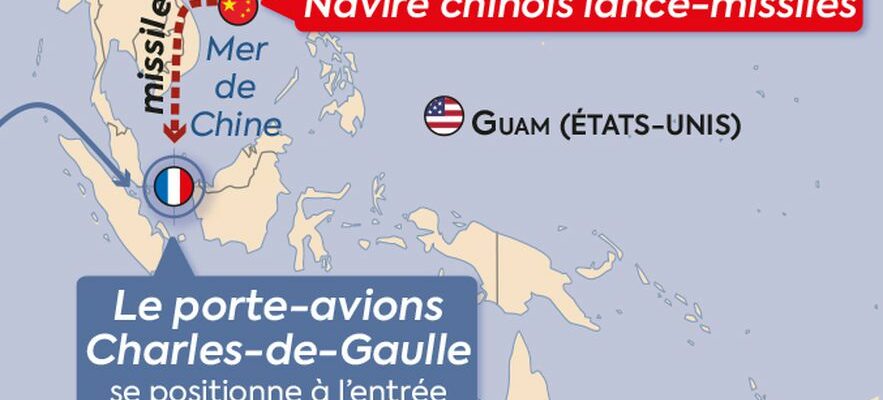In 2013, who could have imagined Daesh, the invasion of Ukraine, the assault on the Capitol? To deal with even the most surprising threats, the Ministry of the Armed Forces has asked the Chiefs of Staff, within the framework of the next military programming law, to detail the dangers hanging over our country. Clearly, to propose credible scenarios justifying the use of force. Independently, L’Express wanted to develop its own “black scenarios” in order to question the preparation, the possible flaws in the French defense, and thus fuel the necessary public debate on these questions at 60 billion euros per year. .
Around forty experts – researchers, generals, diplomats, former executives of the DGSE – were asked to deliver their analyzes of the main threats that await France by 2030. Their framework was developed from a geopolitical tension real, to which we have integrated, on the suggestions of our great witnesses, Murphy’s law, himself an American soldier: “Anything that is likely to go wrong will go wrong.” Russia, China, cyber, jihadism… The majority of these hypotheses overlap with those on which the armies are working. These scenarios do not constitute forecasts. The military, considering the worst on principle, are the first to know: it is never certain. Especially if you prepare for it.
Scenario 1: 2026, Russian tanks enter Estonia and Lithuania: “The area is a weak point for NATO”
Scenario 2: 2028, Madagascar takes over the Scattered Islands from France, China pulls the strings
Scenario 3: The sunken aircraft carrier Charles-de-Gaulle
January 2026. China suddenly positions ten frigates and its Type 055 missile destroyer on either side of Taiwan. Its stealth fighter jets fly close to the coast. On Chinese television, Xi Jinping announces an operation to protect China against “interference” in this territory. The blockade has begun. “A social or economic crisis in China can convince the power to accelerate its reunification project with Taiwan before 2027, it is quite credible,” said researcher Marc Julienne, specialist in the Middle Kingdom. The United States responds immediately. A carrier strike group escorts the aircraft carrier Stennis to the China Sea. On January 20, an American patrol boat enters the Taiwanese exclusive economic zone. The Chinese destroyer fires at it, an American stealth ship retaliates with its Tomahawk missiles. The naval battle left 35 dead on the Chinese side, and 12 on the American side. The next day, Xi Jinping declares, in an ambiguous formula, that he wants to respond to the “war” led by the United States.
2026, China sets up a blockade around Taiwan and sinks the French aircraft carrier Charles-de-Gaulle.
© / Map legends
In the days that followed, the United States worked to form a coalition, with the aim of ending the blockade of Taiwan. South Korea, Japan, the United Kingdom, Canada, Australia and New Zealand are committed. In France, where the tone has stiffened against China, accused of stealing industrial secrets and misinforming opinions overseas, people hesitate. “Even if the North Atlantic Treaty does not cover the Taiwan Strait, the United States would ask its European allies to show solidarity and join a coalition”, advances Antoine Bondaz, researcher at the Foundation for Strategic Research . On January 25, President Emmanuel Macron announces French participation in the operation to lift the blockade. On January 26, the Charles-de-Gaulle aircraft carrier set sail for the Indian Ocean, escorted by three frigates. The debate on whether to send such a sensitive building near the China Sea has died down. “There are also soldiers who will remember that when you have powerful weapons, it is to use them in the event of a conflict”, notes General François Chauvancy.
“It would be a new Pearl Harbor”
Many doubt that Beijing will take the lead in further aggression from a Western country. No skirmishes have taken place for a week when the aircraft carrier positions itself at the entrance to the China Sea. It was there that he was targeted by about fifteen China’s YJ21 hypersonic missiles, fired from one of their warships.
“In 2023, these missiles are not quite in service yet, but they will be soon. They could reach a target 1,500 kilometers away and challenge the defense of a group of aircraft carriers”, indicates the researcher Joseph Henrotin, editor-in-chief of the magazine CIO. These weapons have the particularity of being manoeuvrable. They can adapt to the trajectory of their target. Four of these missiles hit the Charles-de-Gaulle, despite the presence of the air defense frigate Forbin at its side. “In this area, even with frigates, the Charles-de-Gaulle would be very vulnerable,” confirms General Dominique Trinquand. The building catches fire.
Hundreds of French soldiers leave the ship in lifeboats, soon recovered by the rest of the French fleet, which cannot prevent the aircraft carrier from sinking. The three billion euro French military jewel is no more. 510 deaths are to be deplored. In his speech, President Macron acts on the Chinese declaration of war. “It would be a new Pearl Harbor. China could attack allied ships if it is to attack Taiwan immediately afterwards”, imagines Colonel Michel Goya. In the hours that followed, Chinese soldiers landed on Taiwanese beaches. The Taiwan War begins.
